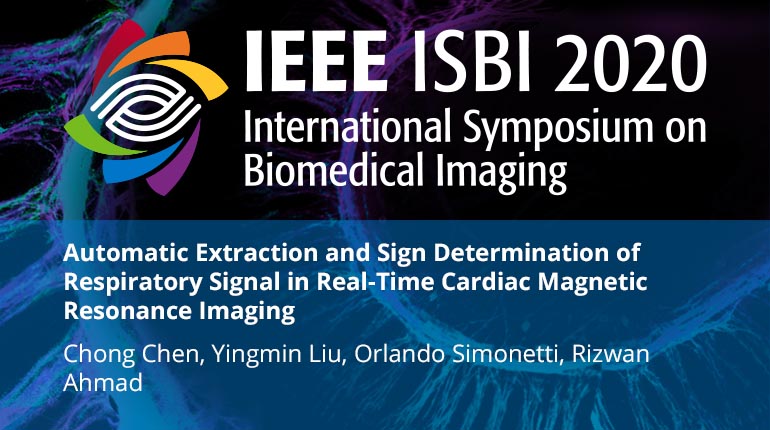
Already purchased this program?
Login to View
This video program is a part of the Premium package:
Automatic Extraction and Sign Determination of Respiratory Signal in Real-Time Cardiac Magnetic Resonance Imaging
- IEEE MemberUS $11.00
- Society MemberUS $0.00
- IEEE Student MemberUS $11.00
- Non-IEEE MemberUS $15.00
Automatic Extraction and Sign Determination of Respiratory Signal in Real-Time Cardiac Magnetic Resonance Imaging
In real-time (RT) cardiac cine imaging, a stack of 2D slices is collected sequentially under free-breathing conditions. A complete heartbeat from each slice is then used for cardiac function quantification. The inter-slice respiratory mismatch can compromise accurate quantification of cardiac function. Methods based on principal components analysis (PCA) have been proposed to extract the respiratory signal from RT cardiac cine, but these methods cannot resolve the inter-slice sign ambiguity of the respiratory signal. In this work, we propose a fully automatic sign correction procedure based on the similarity of neighboring slices and correlation to the center-of-mass curve. The proposed method is evaluated in eleven volunteers, with ten slices per volunteer. The motion in a manually selected region-of-interest (ROI) is used as a reference. The results show that the extracted respiratory signal has a high, positive correlation with the reference in all cases. The qualitative assessment of images also shows that the proposed approach can accurately identify heartbeats, one from each slice, belonging to the same respiratory phase. This approach can improve cardiac function quantification for RT cine without manual intervention.
In real-time (RT) cardiac cine imaging, a stack of 2D slices is collected sequentially under free-breathing conditions. A complete heartbeat from each slice is then used for cardiac function quantification. The inter-slice respiratory mismatch can compromise accurate quantification of cardiac function. Methods based on principal components analysis (PCA) have been proposed to extract the respiratory signal from RT cardiac cine, but these methods cannot resolve the inter-slice sign ambiguity of the respiratory signal. In this work, we propose a fully automatic sign correction procedure based on the similarity of neighboring slices and correlation to the center-of-mass curve. The proposed method is evaluated in eleven volunteers, with ten slices per volunteer. The motion in a manually selected region-of-interest (ROI) is used as a reference. The results show that the extracted respiratory signal has a high, positive correlation with the reference in all cases. The qualitative assessment of images also shows that the proposed approach can accurately identify heartbeats, one from each slice, belonging to the same respiratory phase. This approach can improve cardiac function quantification for RT cine without manual intervention.
 Cart
Cart Create Account
Create Account Sign In
Sign In





